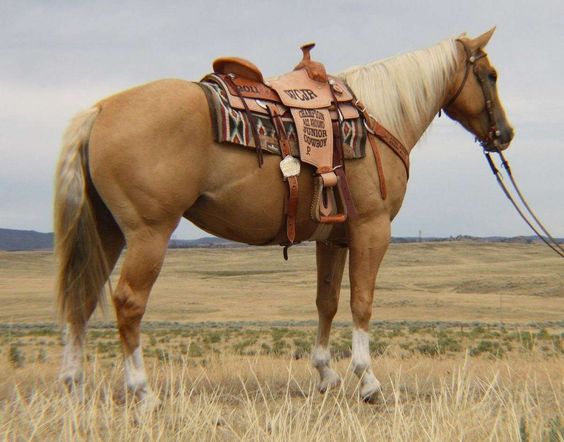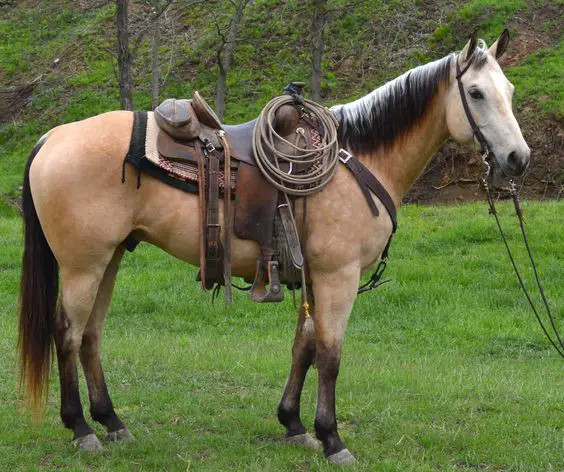Horse riding is a rather difficult sport and recreation. And special attention should be paid to ammunition, since the health of the rider and the horse itself, and sometimes even life directly depends on its reliability and correct attachment.
Therefore, every rider should be able to properly saddle a horse. Next, we will look at the main points of a competent saddle and pay attention to those points of this process that are worth paying special attention to.
The Basics of Correct Saddle
How to saddle a horse so that there are no problems while riding?
This process is divided into several main stages. This is cleaning the animal, putting on the bridle, and attaching the saddle itself to the back.
However, before starting the saddle, it is important to take time to communicate with the horse, calm the animal, establish contact with him in order to achieve mutual understanding and disposition.
When contact is established, you can proceed directly to dressing horse riding equipment.
First of all, before starting the saddle, each rider must carefully examine the horse for its physical condition. The slightest swelling in the area of attachment of ammunition, scuffs on the withers and sides, any, even the smallest wounds must be detected in time and treated with antiseptic and healing drugs.
If the detected damage causes severe discomfort in the animal, and there is a risk of aggravating the condition of the horse with a saddle or bridle, it is best to postpone riding or training until the animal returns to normal. When examining, do not forget about the horse’s stomach and the area under its front legs, since this is where the girth straps pass. If there is any damage in these places (wounds or scuffs), then it is temporarily not worth using such an animal under the saddle.
If the inspection does not reveal any abnormalities, you can start cleaning.
The horse is cleaned with special brushes or scrapers. You need to start on the left side of the horse, moving from the head to the croup, then moving to the legs. In doing so, care must be taken not to accidentally injure the animal. The mane and tail are combed with metal or plastic combs (depending on their density).
Dressing the Bridle

The next stage is the bridle, For this, you need to carefully put a bridle on the horse’s head. In this case, you need to be careful, you should not pull it and jerk the horse’s head, as this can lead to injury to the mouth and lips of the animal with a metal bit.
The process itself is as follows. You need to stand on the left side next to the horse and put the reins around its neck. Then, with your right hand, you should grasp the animal’s head (slightly above the nose and below the eyes), and then gently pull it down. After that, you should thread the capsule, which is a special wide ring, under which belts with iron elements are located, and quickly, but very carefully, insert the iron into the horse’s mouth.
Some cunning horses refuse to open their mouths at all, and it is impossible to introduce iron immediately. In no case should a horse knock on a snaffle bit. This only makes the animal nervous but does not make your task easier. The easiest way is to press with the fingers of the left (free) hand on the base of the mouth. This area contains the soft part of the gums, and with enough force, the horse will open its mouth by itself, which will make it possible to insert a metal bit.
The next step is to thread the bridle of the animal’s ears. In this case, you need to make sure that the forehead strap is not too high on the forehead and is not too low. If the horse has a bang, it must be threaded into the forehead, otherwise, the pressed hair will tickle the forehead of your horse while riding. After all these steps, you need to fasten the chin strap.
After successful bridling, rest a little and let the animal calm down, and then, with fresh strength, you can saddle the horse.
Saddling
The first step is to cover the horse’s back with a special blanket that protects it from chafing while riding. It’s called a saddle cloth. It is important to make sure that it completely covers the withers and the lower edge of the shoulder.
The rivets and loops of the saddle cloth should be directed towards the head. A shock absorber is placed on top of the saddle cloth (a gel pad that helps to optimally distribute the rider’s weight over the horse’s back), and a saddle cloth is placed on it. The laying direction is the same as for the saddle cloth.
Next is the saddle. We take it and unfold the girth, laying it on the seat. Place the saddle on your back so that the rear edge of the saddle is aligned with the rear edge of the shock. Next, we thread the girth into the saddle cloth loops and wrap the fasteners around the belts.
We proceed to the most troublesome part of the saddle – securing the girth. It must be held under the chest of the animal and fastened to the left strap. It is important to remember that there should be two fingers between the girth strap and the animal’s skin.
Girth tightening can be tricky, especially for beginners and if the horse is cunning and voracious. Horses are very quick-witted animals, and often take in more air to increase in volume. As a result, the girth seems to be tightened according to all the rules, but when riding, the horse is “blown away”, the girth sags and the rider unexpectedly flies out of the saddle. To avoid this, after the saddle, lead the horse on the bit, and before getting into the saddle, check your friend. If loose, tighten again.
When saddling a horse, in some cases, elements such as bandages, boots, cords, props, or martingale are used. And remember – a saddled horse should not be left without your supervision.
How to Mount a Horse?

So, the horse is saddled, and it’s time to get into the saddle.
This can cause some problems for beginners, so it is best to use a landing stand at first. In addition to a more comfortable fit, it also reduces the strain on the horse’s back. When learning to mount a horse, ask an experienced person to hold the horse’s head so that it does not start moving before you sit in the saddle.
The horse is always mounted on its left side. In this case, the left leg must be inserted into the left stirrup, and then the right leg should be thrown over the horse’s back and placed in the right stirrup.
If there is no one to help during landing – firmly hold the reins in your left hand and control the animal’s head. When doing this, try not to pull too hard, otherwise, the horse will start to move backward.
Sitting in the saddle, first of all, find a position that is most comfortable for you and allows you to keep your balance well. The back should be straight. In other words, your ears, shoulders, pelvis, and heels should be in line. The shoulders should be straightened, and the bulk of the weight should be transferred to the buttocks.
Sitting in the saddle, it is important to position your legs correctly.
They should, as it were, hug the body of the animal. The knees turned outward immediately betray beginners. The toes should be pointing up, and the heels, on the contrary, are pointing down.
You can practice on a step or any other elevation. Stand with your toes on the edge and lower your heels down, maintaining balance. This is the correct position of the feet in the stirrups.
